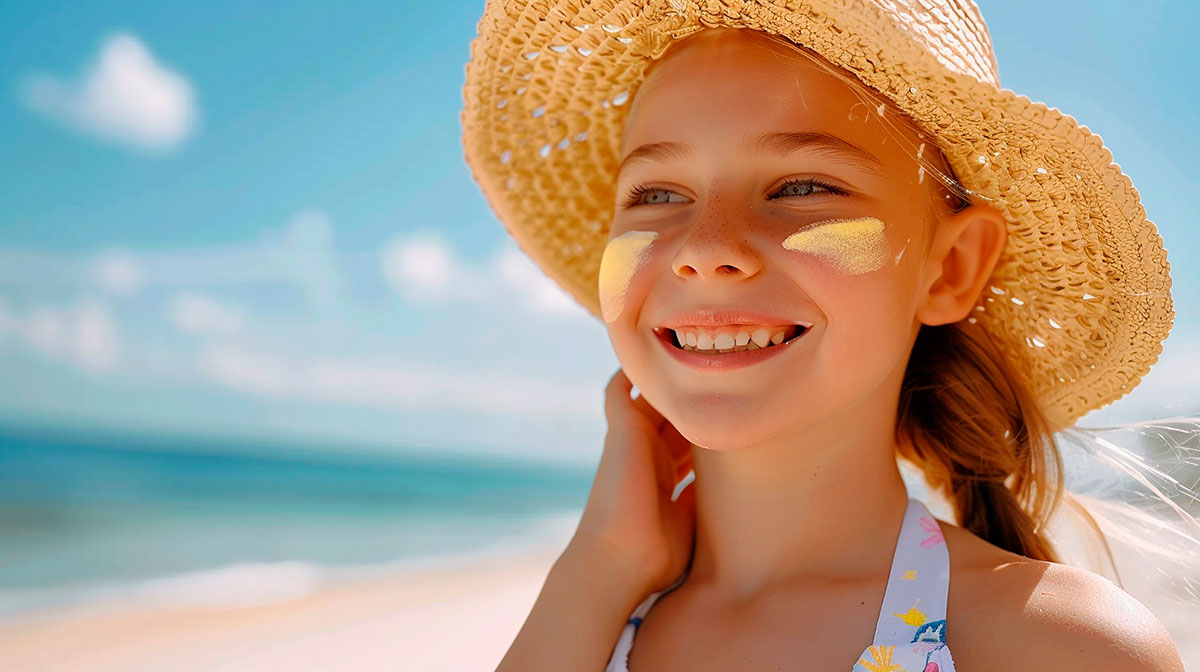
Protecting children from the sun and heat is crucial, especially on summer days, when UV radiation and high temperatures can pose a serious threat to their health. In this article, you'll learn what steps to take to effectively protect your child from the harmful effects of the sun and overheating. We'll discuss sunscreen, appropriate clothing, and proper hydration, among other things. Take care of your child's health with our practical tips.
Why is sun protection important?
Sunlight is essential for health because it helps produce vitamin D, which is crucial for bone development. However, excessive sun exposure can lead to sunburn, dehydration, and long-term skin problems, such as skin cancer. Protecting your child from the sun is therefore not only important but essential.
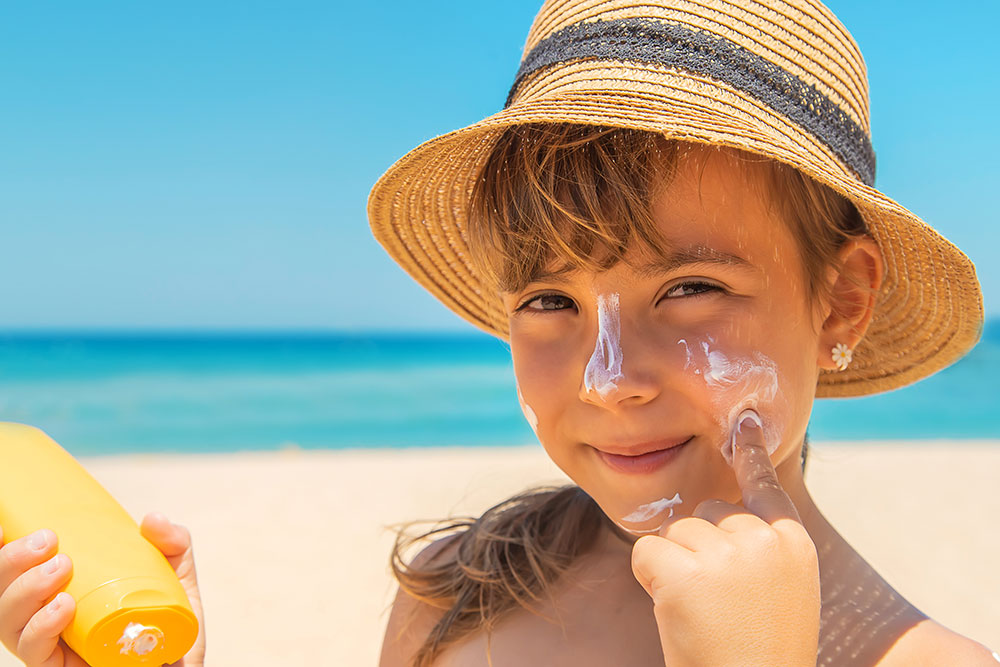
Using sunscreen creams
One of the most important steps in protecting your child from the sun is using sunscreen. These sunscreens should have at least SPF 30 and should be applied every two hours and after any contact with water. It's worth choosing products designed for children, which are gentler on the skin.
Clothing appropriate for the sun
Appropriate clothing is another key element of sun protection. Children should wear light, airy clothing that covers as much skin as possible. A hat, preferably with a wide brim, is essential to protect the face and neck from the sun's rays. Sunglasses with UV protection protect children's sensitive eyes.
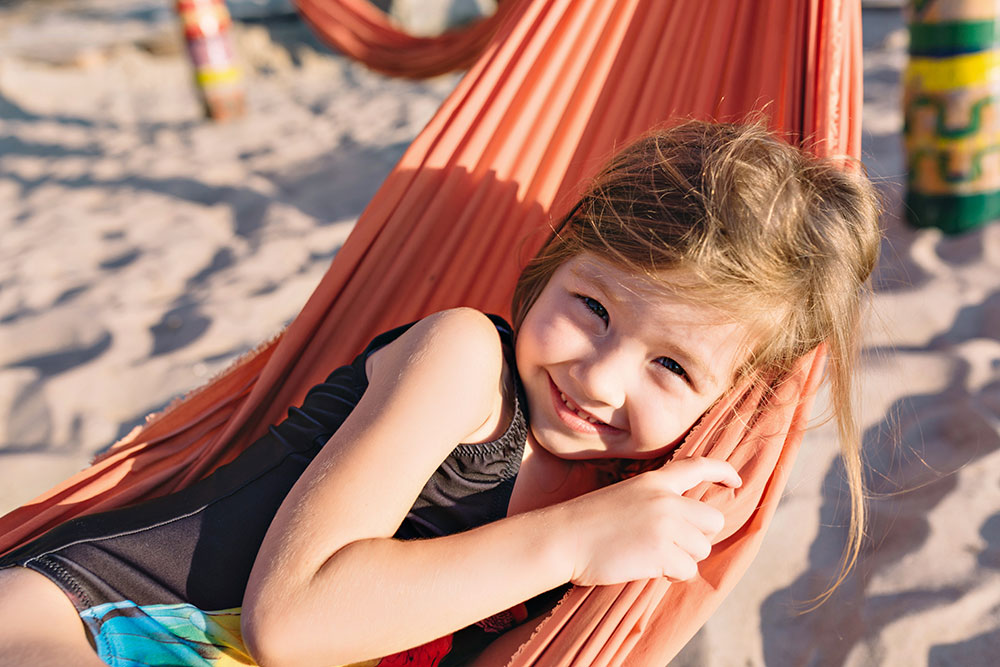
Avoiding the hottest hours
It's best to avoid direct sun exposure between 10:00 a.m. and 4:00 p.m., when UV radiation is at its strongest. During this time, it's best to spend time in the shade or indoors. If your child must be outdoors, it's a good idea to provide a shaded area, such as under an umbrella or in a gazebo.
Hydration of the body
Children are particularly susceptible to dehydration, so it's important for them to drink water regularly, especially on hot days. A good habit is to give your child small amounts of water every 20-30 minutes, even if they don't express thirst. Avoid sugary and carbonated drinks, which can contribute to dehydration.
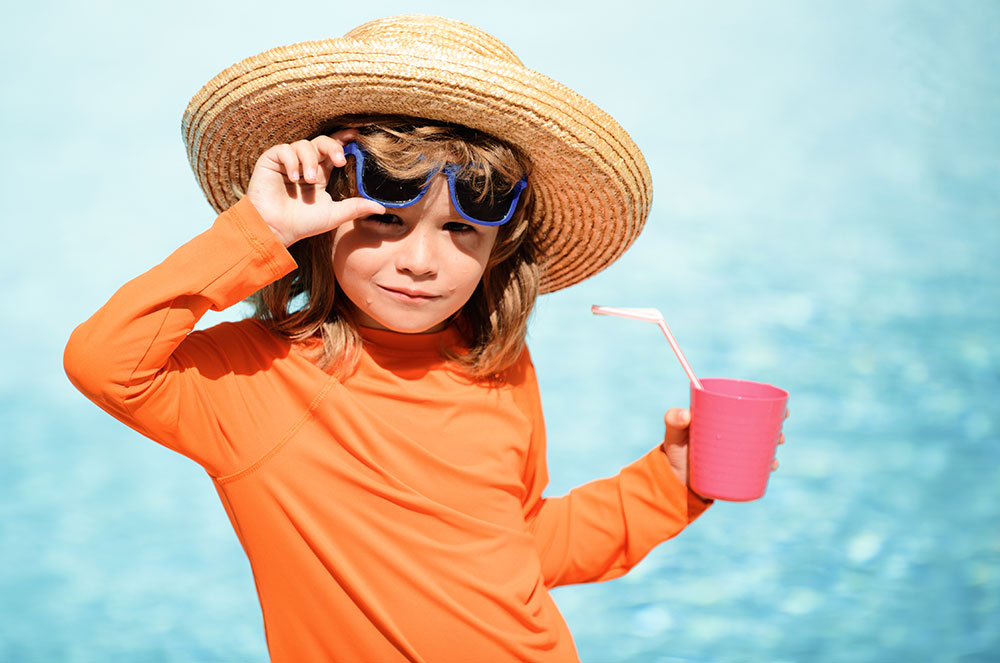
Protection of infants and young children
Babies and young children are particularly sensitive to the sun. Children under six months should be kept out of direct sunlight. It's a good idea to equip strollers with sunshades or umbrellas. Remember that babies' skin is very delicate, so choose only products designed for their age.
How to recognize the symptoms of overheating?
It's important to know the signs of overheating so you can react quickly. Symptoms include red, hot skin, lack of sweating despite the heat, rapid heart rate, headache, dizziness, nausea, or vomiting. If these symptoms occur, immediately move your child to a cool place, give them water, and, if necessary, contact a doctor.
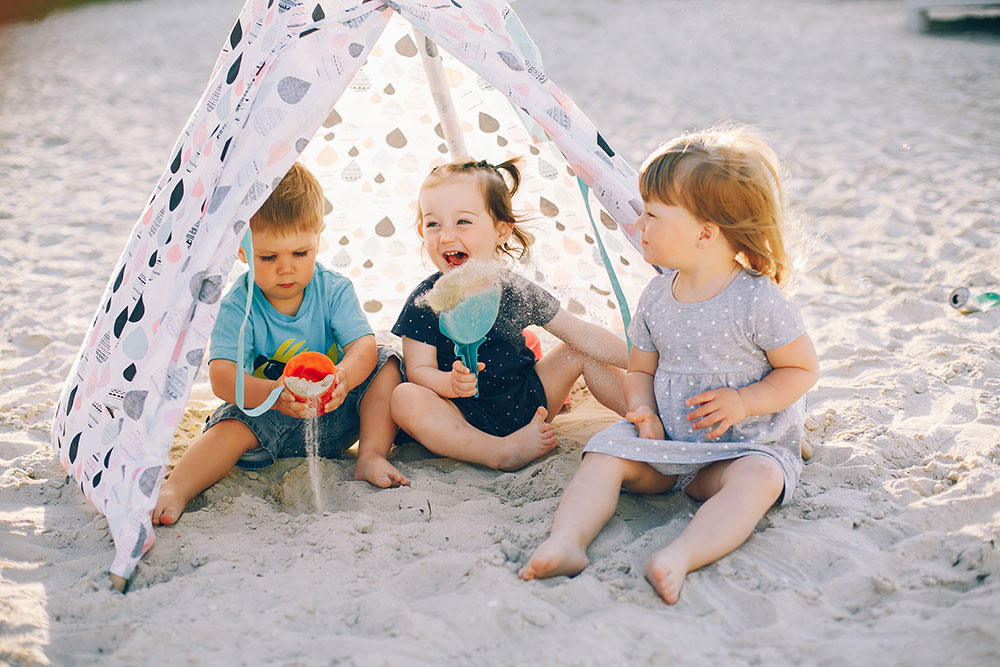
Educating children about sun protection
Educating children about the importance of sun protection is crucial. It's worth explaining why wearing a hat, sunglasses, and sunscreen is important. You can also show them how to properly apply sunscreen.
Physical activity on hot days
On hot days, it's best to limit vigorous outdoor activity. Instead, encourage your child to play in the shade, play board games, or engage in indoor activities. If outdoor activity is necessary, it's best to schedule it for early morning or late afternoon, when temperatures are cooler.
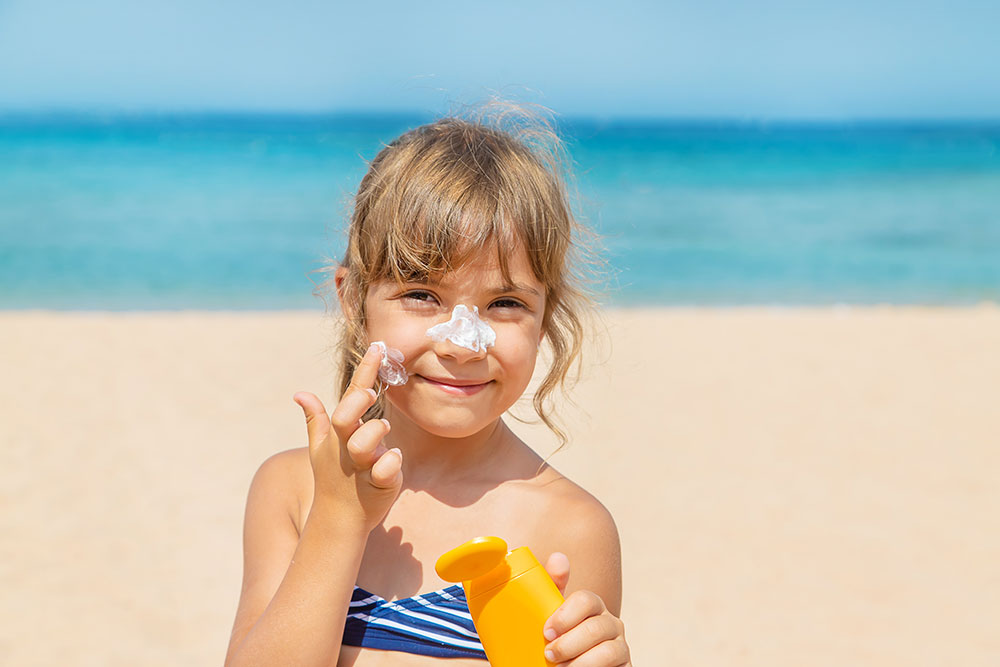
Using air conditioning and fans
In homes, it's a good idea to use air conditioning or fans to maintain a comfortable indoor temperature. However, be careful not to set the temperature too low, as sudden temperature changes can be harmful to your baby's health.
Protecting your child from the sun and heat requires a few simple but effective steps. Regularly applying sunscreen, dressing appropriately, avoiding the hottest hours, staying hydrated, and educating your child are key elements that will help protect their health and well-being on hot days.


Podziel się:
Children's safety around water - A guide for parents
Children's safety around water - A guide for parents